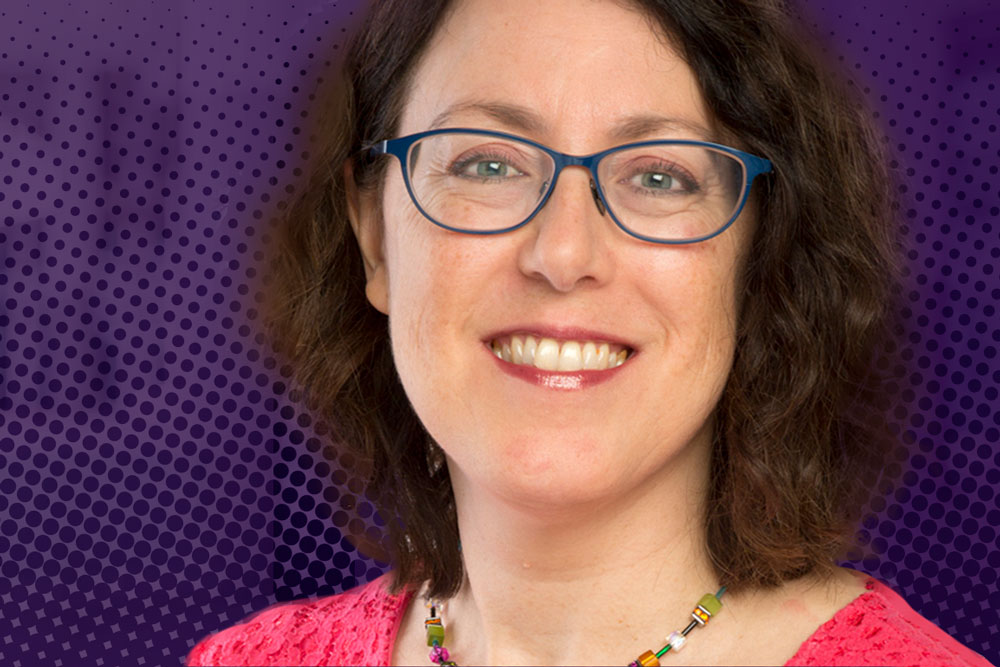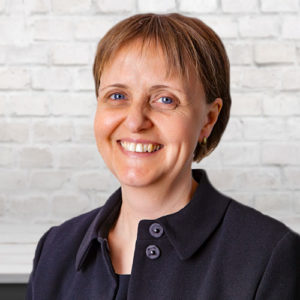The chief digital and information officer of Bradford Teaching Hospitals NHS Foundation Trust (and new HM advisory board member) talks to Lyn Whitfield about Cerner Millennium, the trust’s ground-breaking command centre, and the NHS IT policy environment.
When Cindy Fedell moved to England, she found informatics was far less firmly embedded in the NHS than it was in the health system of her native Canada.
Five years on, she feels that is changing. But she still worries that both myths and hype abound in healthcare IT. “The myth is that we are a complete basket case, which is not true,” she says. “The hype is that the latest big idea will solve everything. That’s not true, either.”
The hype matters, she adds, because it can distract trusts from things that need more priority: whether that is sorting out basic infrastructure or progressing their own IT strategies.
As an example, she cites the Axe the Fax campaign, which encouraged health and social care secretary Matt Hancock to announce in December that he had ‘banned’ trusts from buying new fax machines from this January.
It’s not that Fedell is against the idea of ending day to day communication by fax (although she points out that it can play a useful back-up role if there is an IT failure). It’s just that: “Now we have to take staff of whatever they were doing and put them on this: and, really, was it more of a priority than whatever they were doing?”
Trusts, she argues, need a roadmap to IT maturity, but they should be allowed to progress along it at their own pace.
Going live with an EPR
Fedell developed an interest in IT while working at a hospital as she studied for her first degree. She decided to take a second bachelor’s degree, this time at Toronto’s Ryerson University, and then moved into project management.
From 2009 to 2013, she was director of informatics at the city’s Mount Sinai Hospital, after which she decided to move to the NHS in search of a new challenge and learning opportunity.
At Bradford Teaching Hospitals NHS Foundation Trust, she has pursued a strategy that sought out an electronic patient record partner, and then jointly implemented Cerner Millennium with neighbouring Calderdale and Huddersfield NHS Foundation Trust.
Bradford Teaching Hospitals went live with the electronic patient record in October 2017. “We did a lot of work in the run-up to the go-live to make sure clinicians felt comfortable with it, so they went into the deployment feeling good and they still feel good,” Fedell says.
“But on the administration side it has been really, really hard. There are hundreds of administration staff and they do not work for one boss or in the same way. But Cerner is very strict about the order in which things are done along a pathway, and if people don’t do them in that order they have to go back.
“Our data depends on people all doing things in the same way, so we have had to do a lot of work on standardisation and a lot of retraining. However, I think we are on top of it now.”
Implementing ‘air traffic control’
Better, Fedell says there are signs that staff have not just accepted the EPR, but that they are starting to make more use of it. “When we go onto the wards, people are starting to say: ‘We would like this’ or: ‘We could add that’,” which is a good sign,” she says.
Staff are also starting to migrate off the trust’s remaining legacy systems; leading to a big drop in transcription rates and costs as they create more notes and letters electronically. With this happening, the trust has been able to turn its attention to other IT developments.
Last October, it announced that it had signed with GE Healthcare to develop a first of type in Europe ‘command centre’ that will act as an ‘air traffic control’ for the Bradford Royal Infirmary.
Fedell stresses this will do far more than a traditional command centre, which shows a trust its bed status and gives it some basic tools to manage it. “This has a simulation model running in the background, using machine learning,” she says. “The intention is to give advice to staff on how to respond to rising pressure.”
At the moment, she points out, the way the trust responds to an influx of patients in A&E will depend on the decisions that individual staff make about what to do first. The command centre will encourage staff to use the most efficient pathways: and then “check back” on whether they were optimal.
“We can do this in Bradford because we have the data to do it from our EPR. But even if you don’t, even if you just have some patient-level data, then AI is a huge opportunity for a trust,” Fedell argues. “This will help with winter and it will help to standardise the way things are done.”
Tackling the patient access and pop health agendas
The trust is also looking to deploy a patient portal from Cerner to shift the way it cares for patients. “We are looking at cancer patients in the first instance,” Fedell says, “but there are lots of conditions where we force people to come into hospital when we could probably monitor and treat them in a different way.”
Then, there is considerable interest in population health management. Alongside her trust job, Fedell is co-chair of the Digital 2020 Board, which was set up in 2016 to take forward the local digital roadmap and to encourage innovation across Bradford, Airedale, Wharfedale, and Craven.
Fedell acknowledges that the idea of population health management is still being developed; and the consultancy and product markets to support it are still emerging. But this is another area in which she feels the potential is huge.
“My patch, around Bradford is very mixed. Bradford is deprived, but then a town like Ilkley has a very different demographic, and a very different pattern of service use,” she points out. “Being able to stratify those populations and say: ‘We need an extra GP practice here’ or: ‘We need to target a public health intervention there’ will make a huge difference.”
Every trust board needs a CIO
This brings Fedell back to the issue of roadmaps. With so much to tackle, she argues, trusts and healthcare economies need a clear vision of where they should be going; but the flexibility to get there in the order that matters most to them.
That might mean ‘going back’ to sort out basic infrastructure or communications; or jumping ahead to the population health agenda. With this in mind, she argues that one of the most useful things that Matt Hancock has said recently is that all trusts should have a chief information officer on the board.
“A good CIO will cut through some of the hype,” she says. “They will be able to make the case for a second power source so the data centre doesn’t go down, or the need to upgrade the PBX so the phones don’t go down; as well as advising on the potential of new ideas.”
Things have changed since she arrived in England, she says. There is a lot more awareness of IT and its role in health and care. National programmes to digitise trusts and local health economies are up and running. Senior IT appointments have been made to national bodies.
There is a strong digital element to the new long-term plan. But: “while good things are happening, we need to have the right conversations,” Fedell says, “and CIOs on boards can really help with that.”



